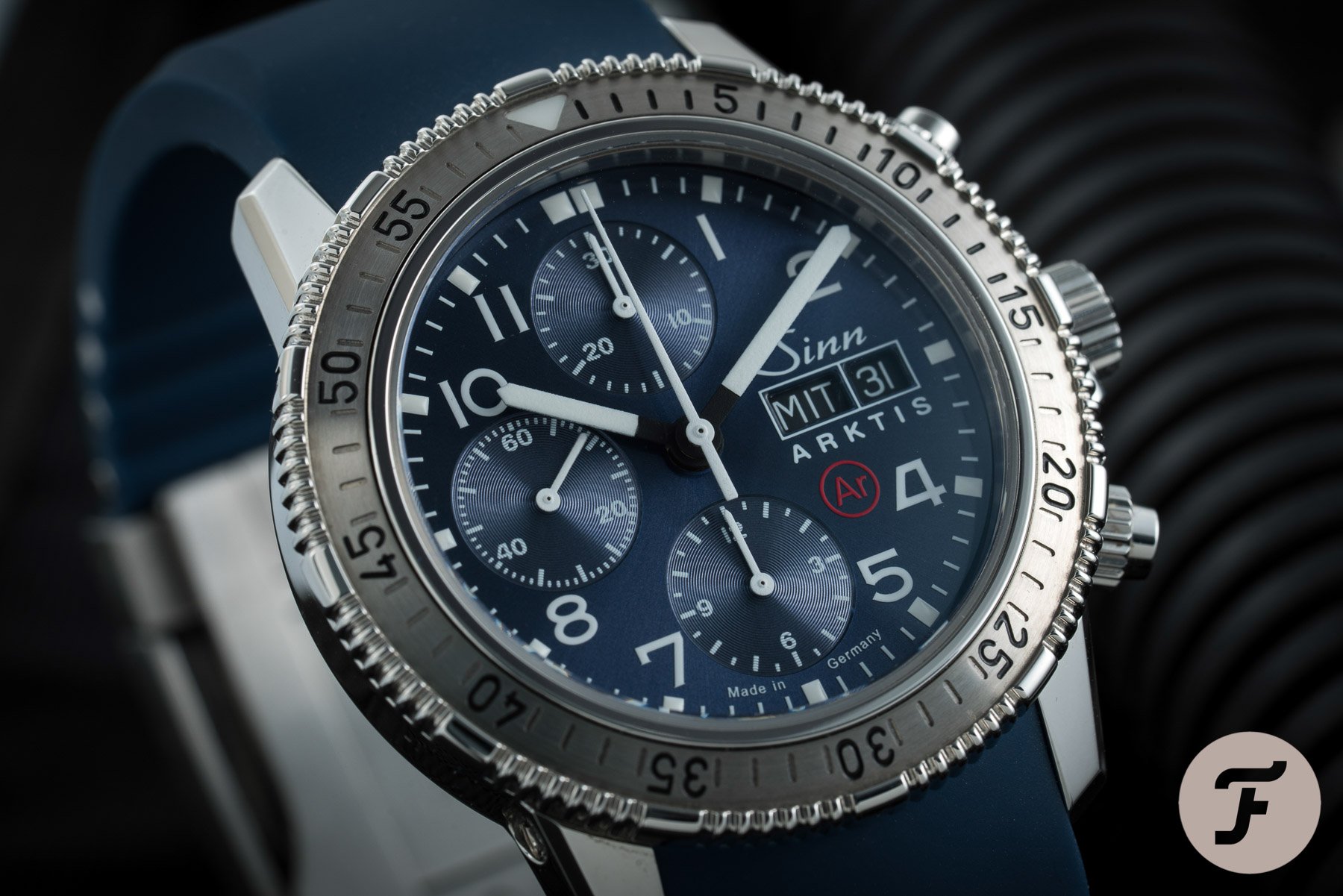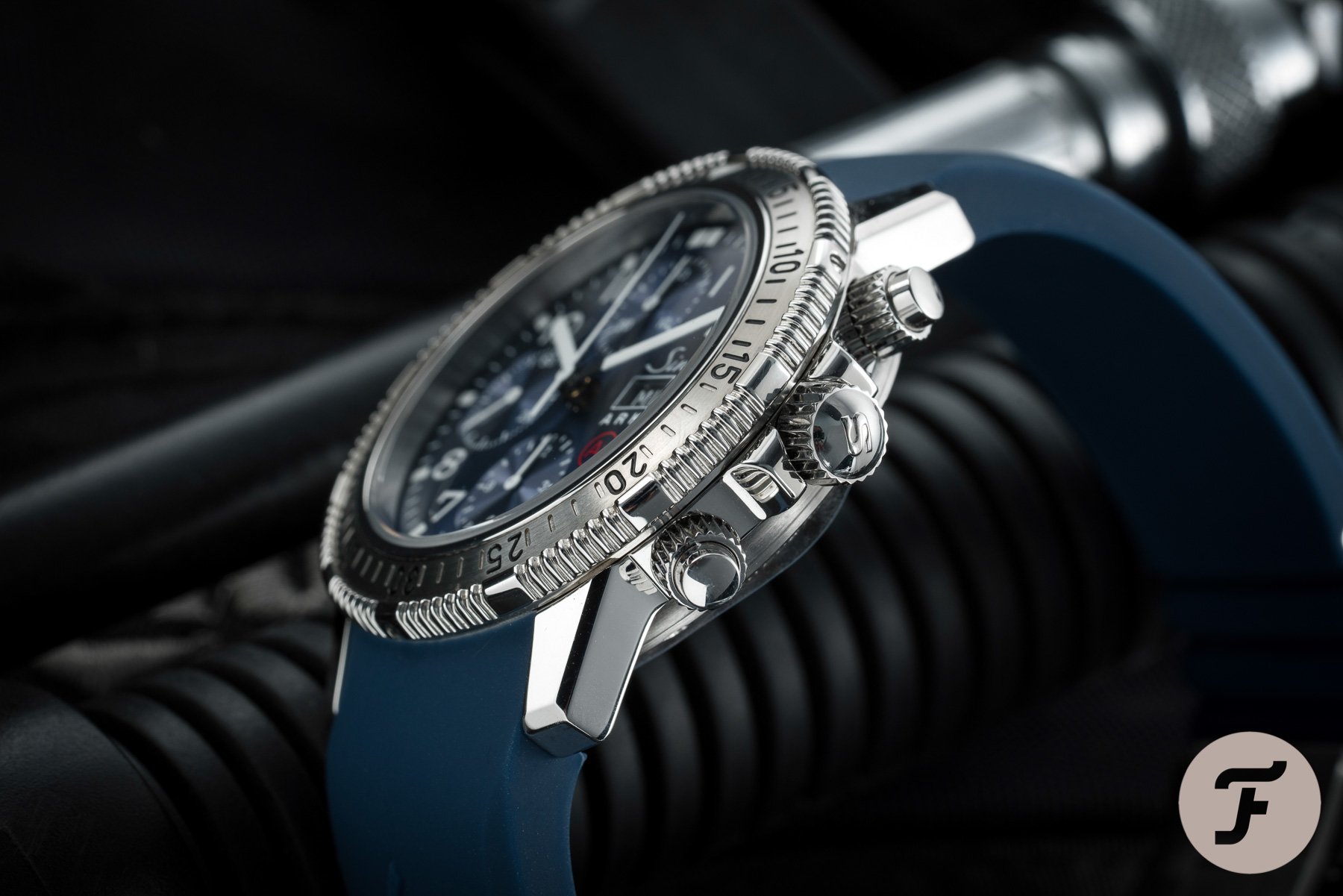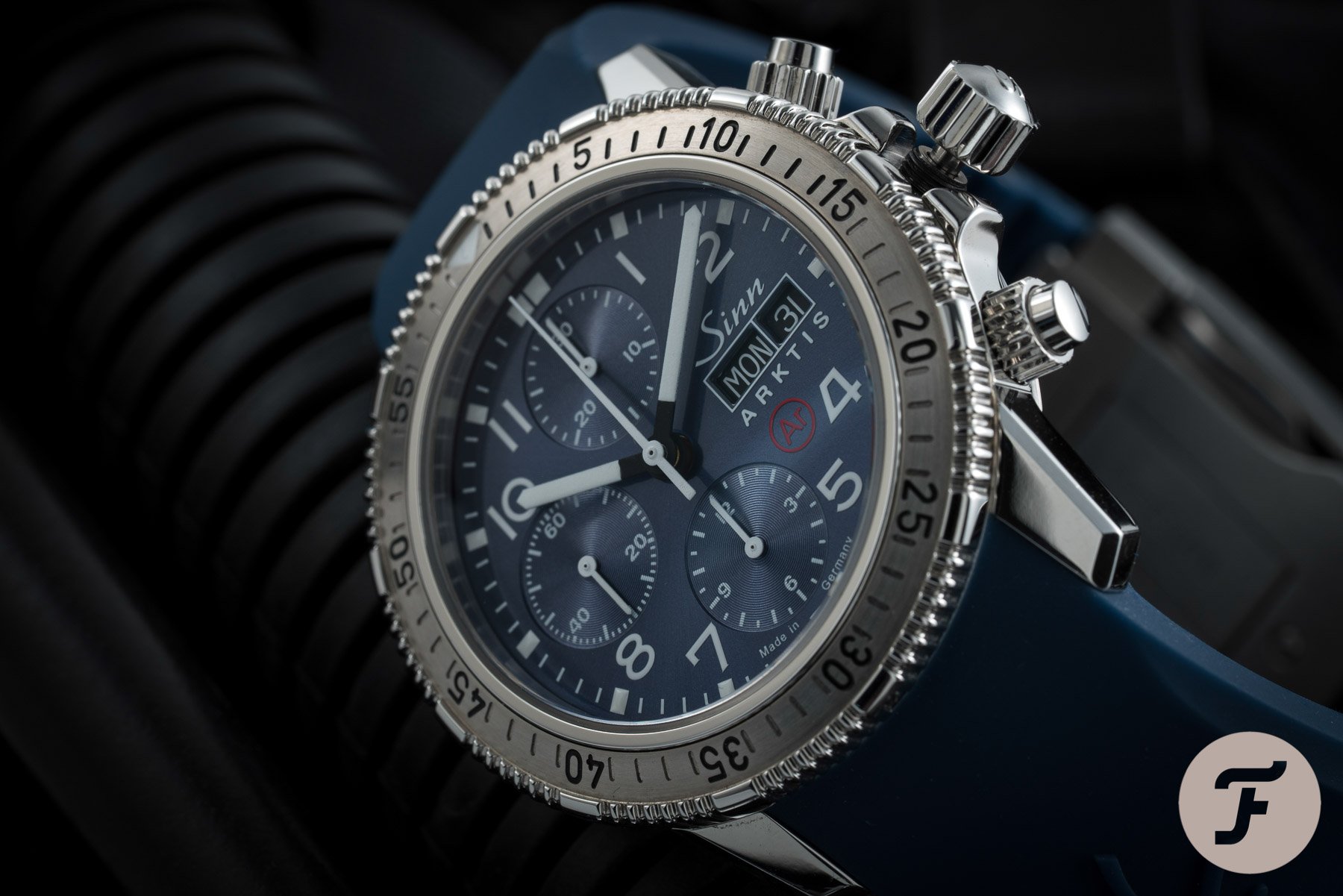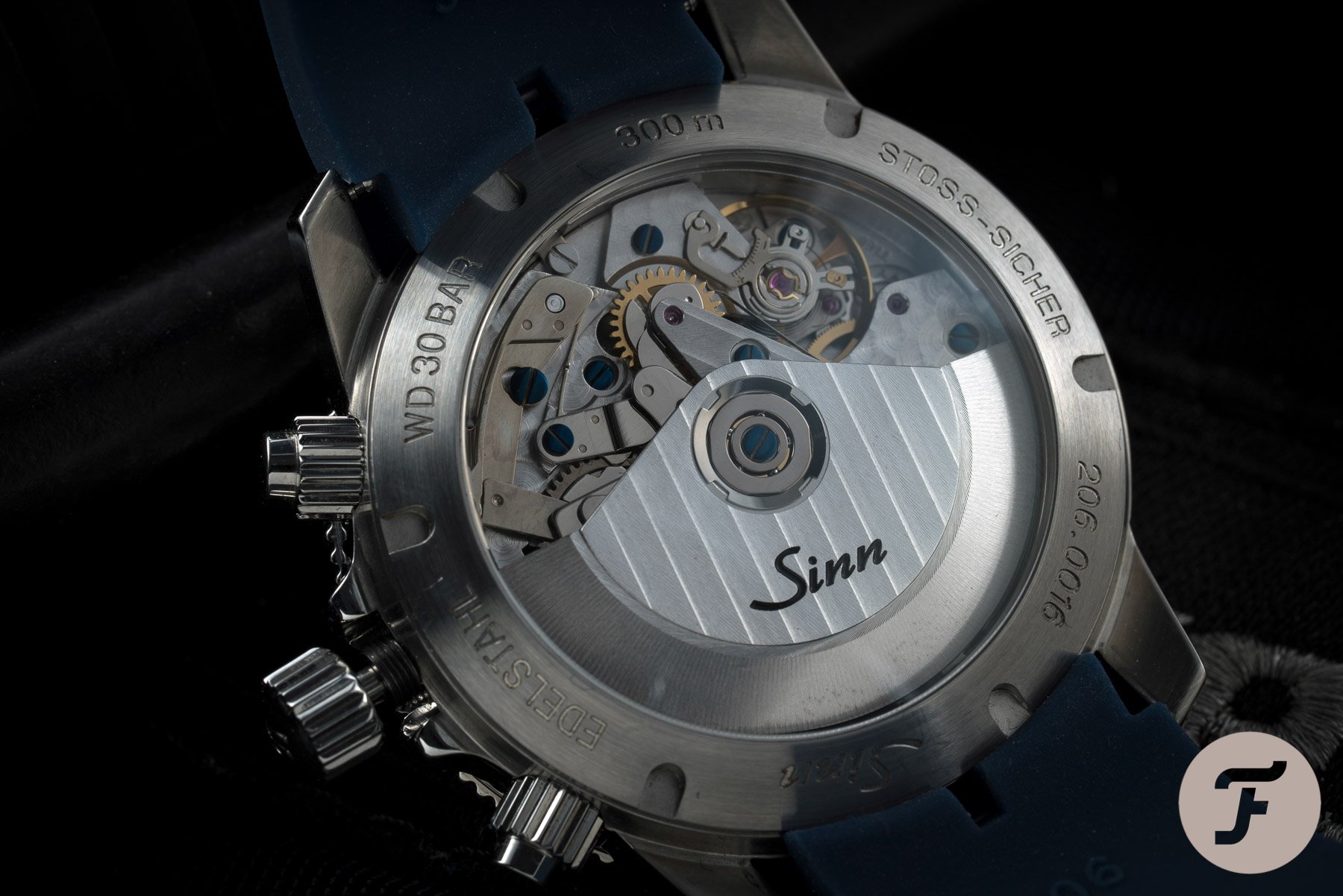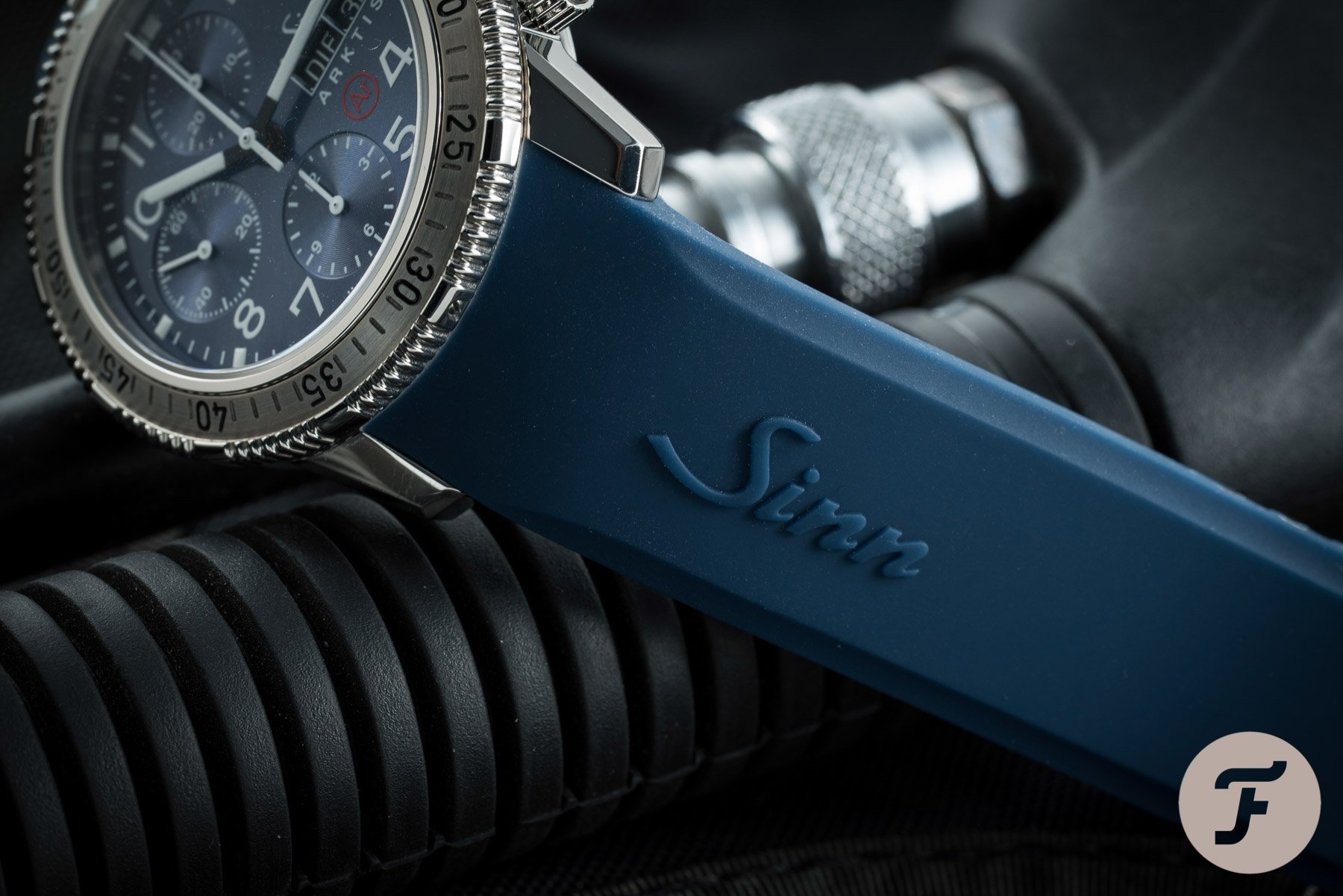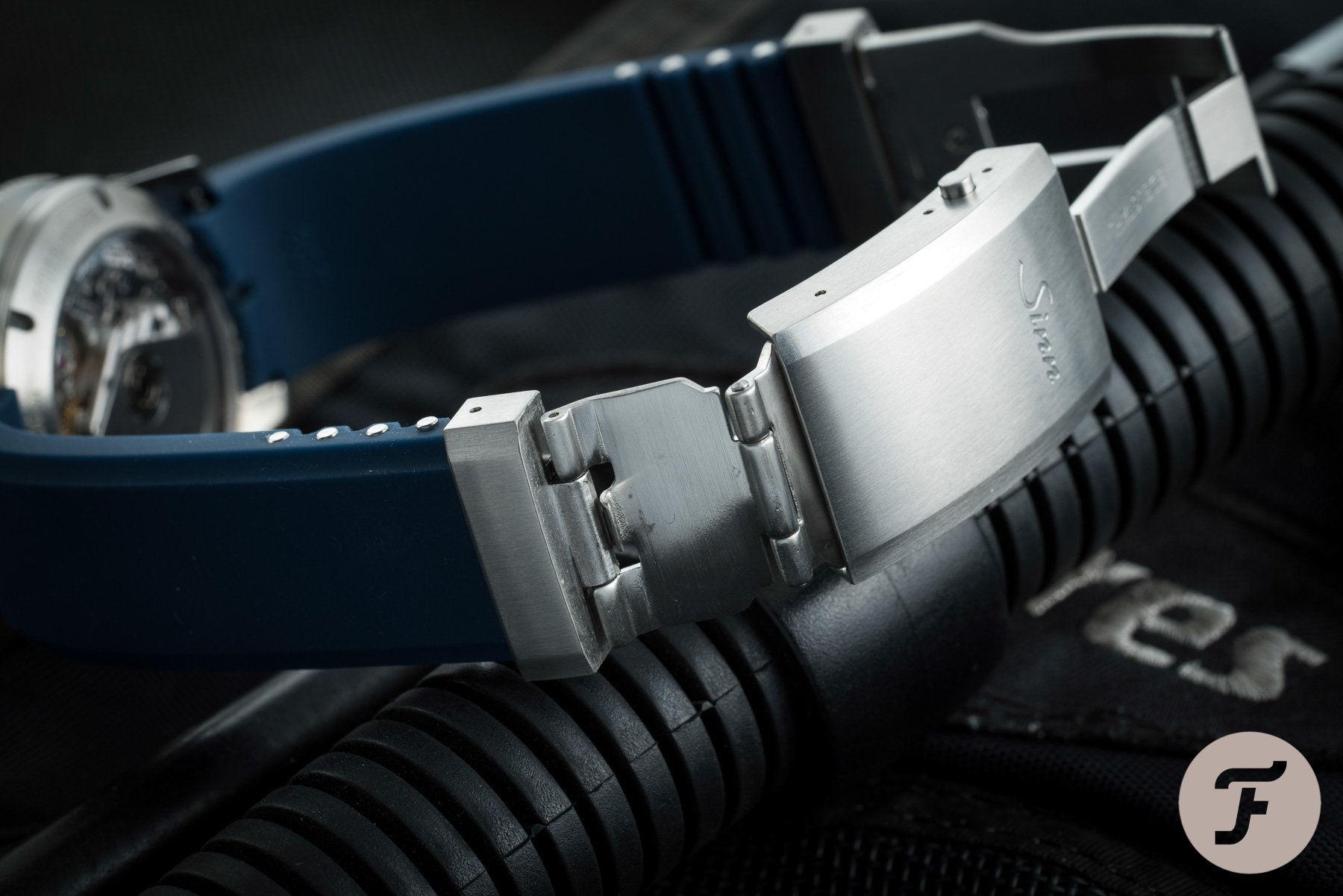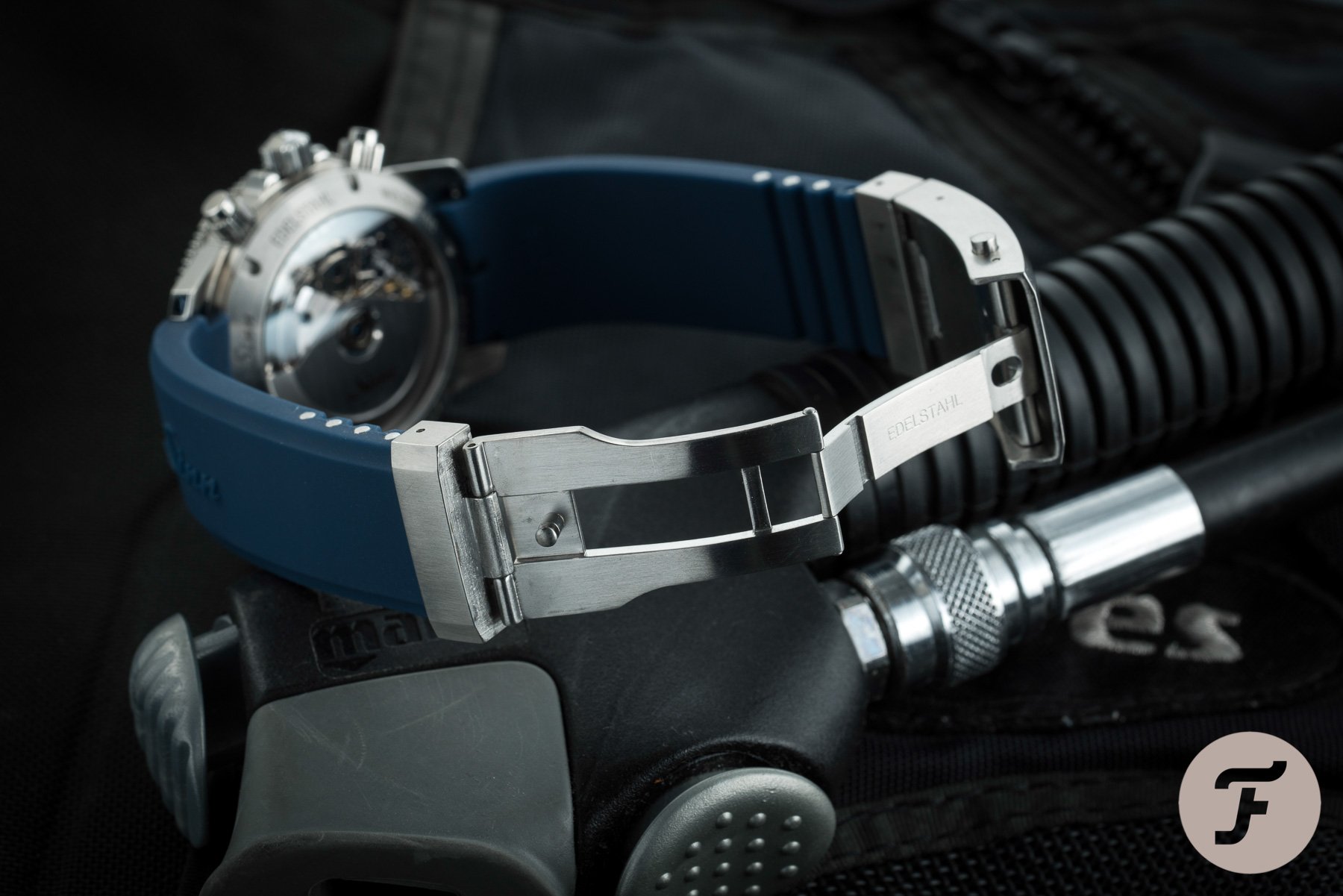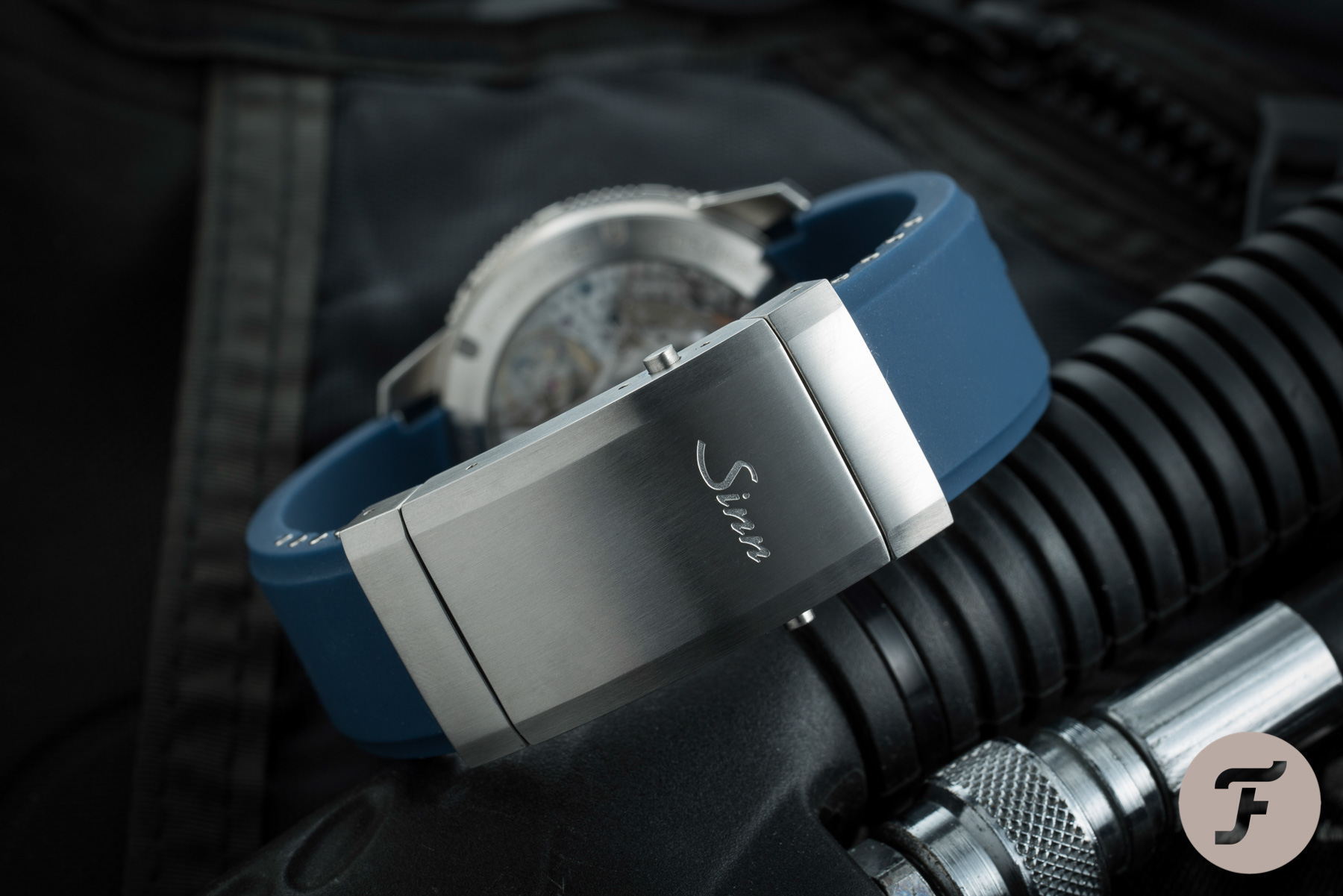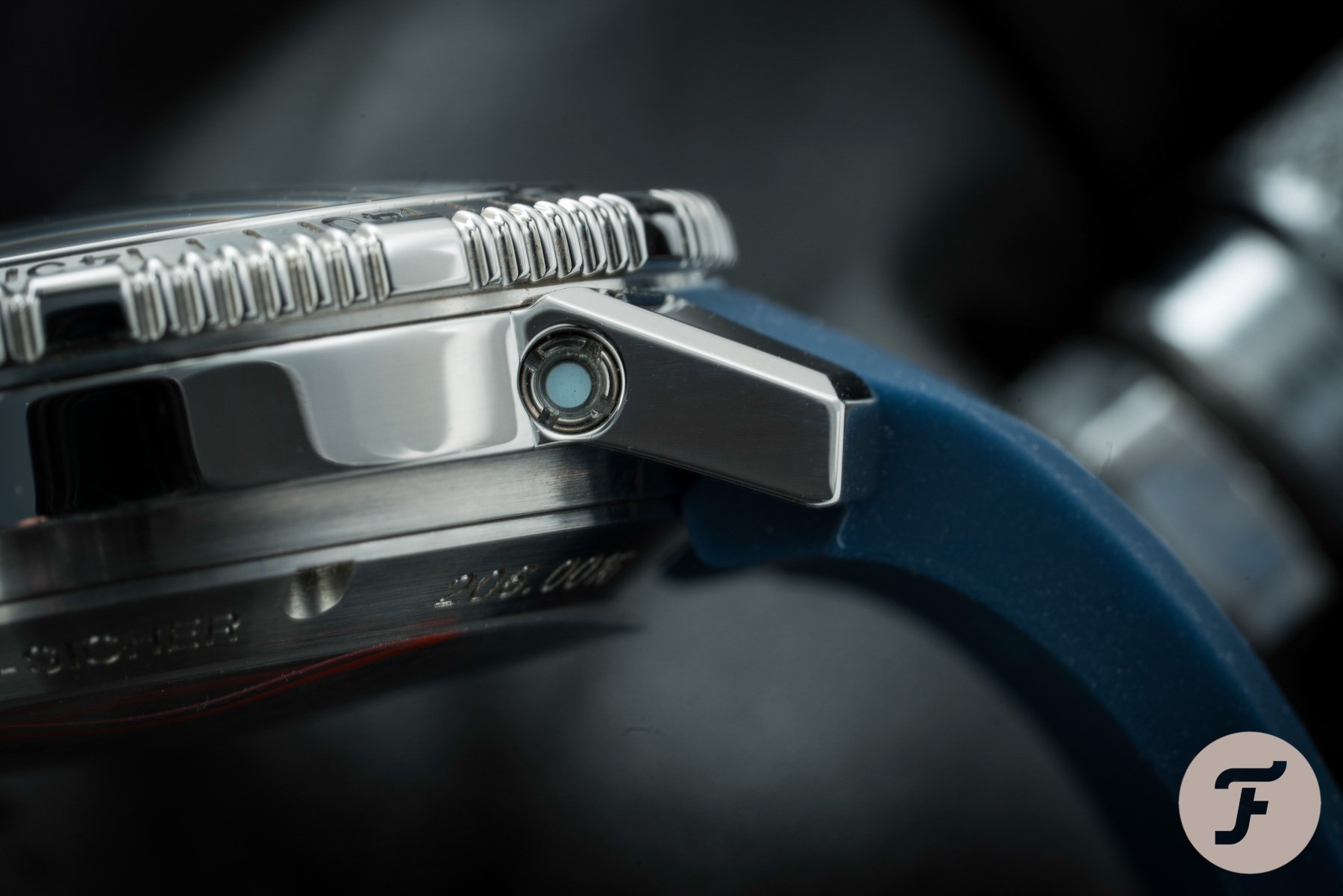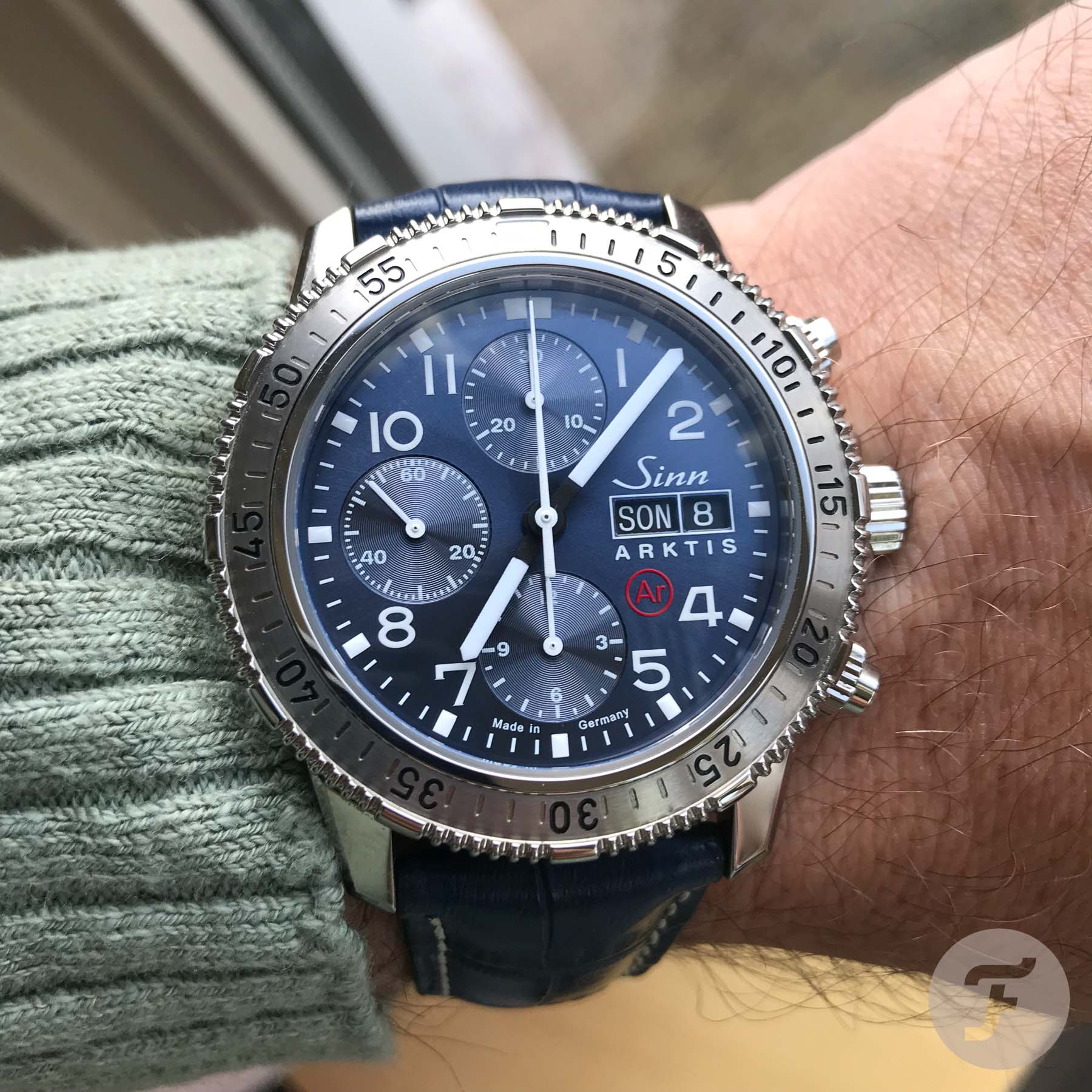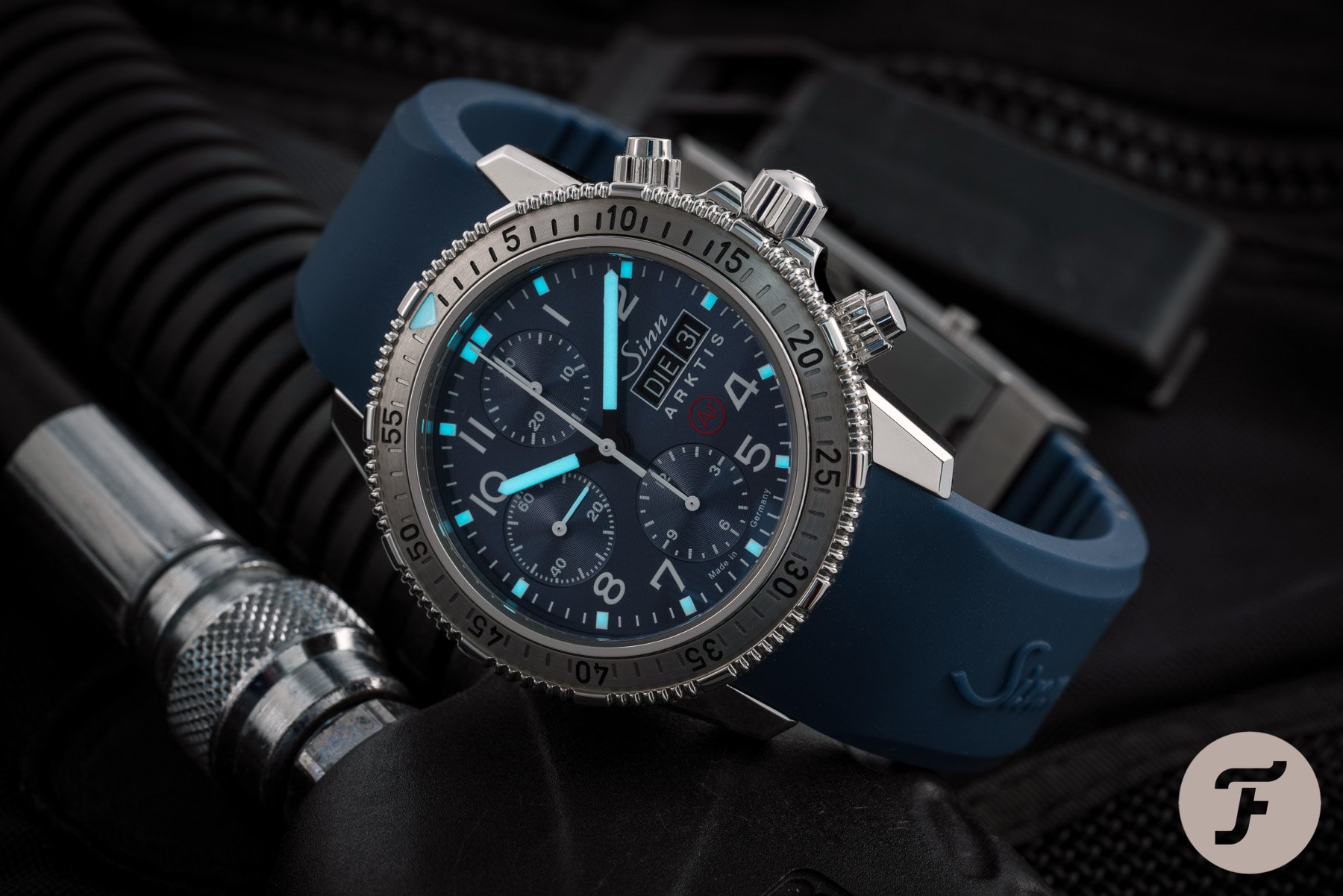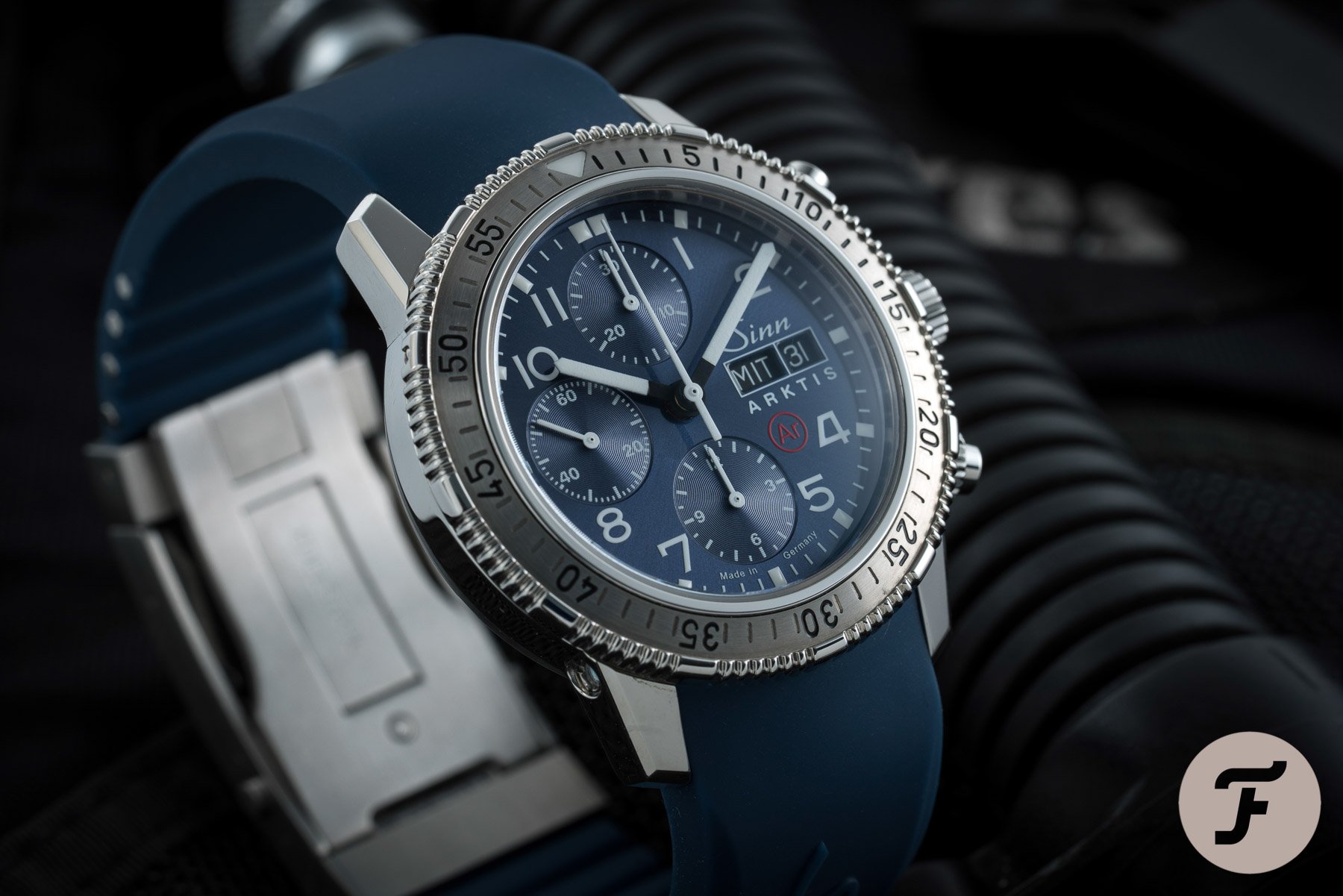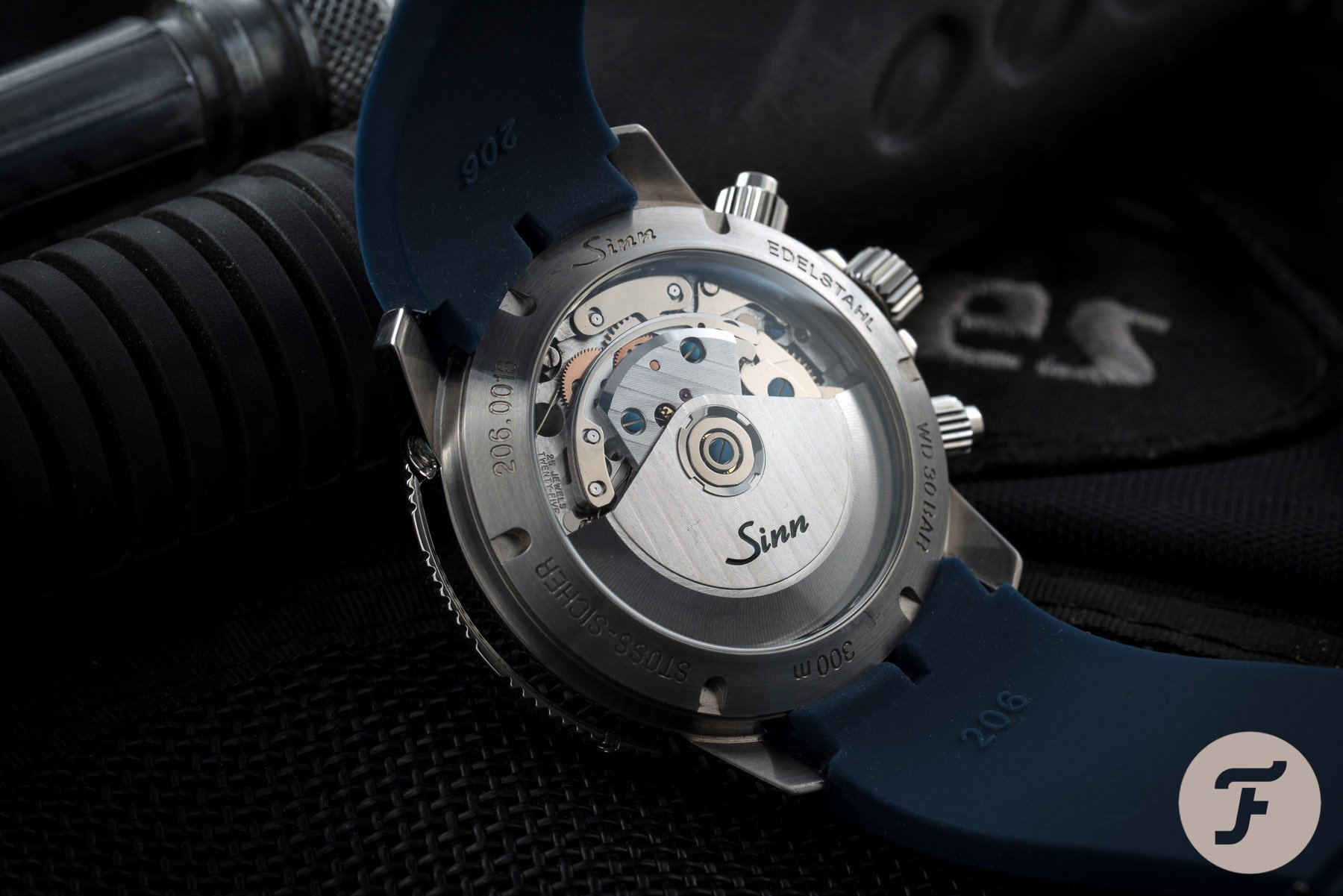Hands-On With The Sinn 206 Arktis II – The Cool Blue
One of the watches that left quite an impression since its introduction in Basel earlier this year, is the Sinn 206 Arktis II. Based on the no-nonsense 206 (and its predecessor the Sinn 203) diving chronograph, but with a touch of ice blue.
In our ‘Hot Take‘ of this watch, we already gave some background information on this new Sinn 206 Arktis II and its specifications. Admitted, with Sinn it is very often about specs, but in this case, I’d say that they’ve really done a nice job to spice it up a bit (or better said: cool it down) with some color. The ice blue makes this watch stand out. Although I love the original 203 and the regular 206 references from Sinn, you could say that those are pretty straight-forward black dial chronographs. With the Arktis (II), Sinn makes the watch much more alive. Or special, as you wish. The German watchmaking company was so kind as to ship the Sinn to our office, so we could have a few weeks of fun with it.
Sinn 206 Arktis II
Grosser Elefant
Now, allow me to get the big elephant out of the room (or as they say in German: Grosse Elefant) before I continue. The diameter of the watch is 43mm and has a lug-to-lug size of 49mm, which is simply too big according to some fans of this Sinn model. When I put it on my 18-19cm wrist, the diameter or even lug-to-luge size is not an issue at all. I think that it also suits the watch perfectly, the sporty style is perfectly underlined with a 43mm diameter. The thing I had to get used to, is the thickness of the watch. It is only 1mm thicker than its predecessor, but much thicker than watches from my own collection. Perhaps, for example, my Seamaster 300M Diver Chronograph, which measures 16.5mm. A diver watch, with a chronograph complication, comes with a certain volume apparently. Also take a look at other professional diver watches, aside from the aforementioned Seamaster 300M Diver Chronograph, there’s the Rolex Sea-Dweller, Grand Seiko SBGA231, for example, that also have impressive dimensions. It isn’t really an issue for me, but just keep in mind that the watch always ‘feel’ present on the wrist. However, the dimensions of this Sinn 206 Arktis II didn’t bother me, at all.
Pushers You Can Use Underwater
The first thing I wanted to do when I strapped the Sinn 206 Arktis II on my wrist, was to unscrew the pushers. As you do with a modern Cosmograph Daytona, for example. But there’s no need for this with the Sinn 206. It is even impossible to unscrew them, the pushers are just ready to be used as they are. This isn’t unique, but it is still not very common for a diver to have a chronograph you can actually use without risking any damage by water entering the case. Sinn calls this their D3 system, which has been around for a while now. The push-piece pins and crown shafts are mounted directly in an aperture of the case, a construction so perfectly fit that it is a perfect seal. Besides mitigating the risk of moisture and dust, it also is more resistant to hard knocks. Sinn decided to simulate the looks of the screw-down pushers, as the predecessor of the 206 still used those to ensure water resistance. As far as I know, those pushers could not be used underwater. With this Sinn 206 Arktis II, you definitely can. I did notice that pushing the buttons requires a bit more force than I am actually used to with my own chronographs, but that might have to do with the spring and its tension. I can imagine that underwater, the pushers need some force to move back out again, so it might require stronger springs. Of course, the winding crown is screw-down. In the 1st position, you can change the date and the day (by turning it cw and ccw for setting those) and in the 2nd position, you correct the time.
Valjoux 7750 Chronograph
It is basically the same operation as it is for any ETA/Valjoux 7750 powered chronograph. This movement has been around for some decades now, and there isn’t much to criticize other than the famous wobble. Some people like it, others don’t. To explain it once more: the rotor only winds the mainspring in one direction, the other direction has no or little resistance. This results sometimes in a super-fast spinning rotor inside the case, causing the watch to ‘wobble’ a bit on your wrist. To some, it feels like heaven (or almost) because it makes them aware of wearing a mechanical watch on the wrist. To others, it feels kinda annoying. To be honest, I was in the latter camp before, but these days I don’t mind it. I was a strong believer of the Lemania 5100 movement in my early days of collecting, and the wobble of the Valjoux 7750 was just another argument for the Lemania 5100. Well, we all know how that ended.
The Valjoux 7750 in this Sinn 206 Arktis II is pleasing for the eyes, has the Geneva stripes on the rotor and perlage on the bridges. The rotor is customized with the Sinn engraving and you’ll find some blued screws in there. I like chronographs with a transparent case back, because you can see the mechanics move when you use the start/stop and reset button. On the bezel of the case back, you’ll find the typical engravings with the water-resistance rate (300 meters, the exact reference of the watch, and some other information. All in German, because that’s where the watch was made. On the Sinn website, there’s a little disclaimer with regards to this movement, that is “it may happen in individual cases that stock items of our sales partners deviate from this information.” followed by a link to an overview of movement suppliers that Sinn uses. I could think of Sinn using a Sellita SW500 for example, which is based on the ETA/Valjoux 7750. But anyway, the movement inside the Sinn 206 Arktis II I have here is definitely an ETA powered caliber 7750. It is engraved on the left (and right) of the balance wheel on the main plate. In the specs sheet below this article, you can find the details on this movement.
Silicone and Leather
We received the Sinn 206 Arktis II on a silicone strap and an extra leather strap was delivered separately. Before I started to wear the watch, we took the photos (to prevent too many smudgy fingerprints on the watch, for example) of the watch with the silicone strap. I tried it on the silicone strap, but to make it properly fit I needed to cut it to size it for my wrist. Since we need to return these watches after a while (yes people), I don’t want to return it on a silicone strap that they can’t use anymore. So I decided to fit the leather strap. A padded alligator leather strap. Well, it is actually a calf strap with alligator grain. You can order a genuine alligator strap though, which replaces the standard leather strap for an extra €160. Up to you, but I would be more than fine with this alligator grain strap. Also better for the alligators, although I think cows are friendlier overall.
For an extra €170, you will receive the Sinn 206 Arktis II on this blue silicone strap with folding clasp, instead of the calf strap. Although I didn’t resize it, it is actually an easy thing to do with the little markers on the inside of the silicone strap. The folding clasp is signed ‘Sinn’ and features a diving extension clasp. Sinn ships a little changing tool so you can swap straps or bracelets yourself. Silicone is soft and comfortable and doesn’t need to break-in, like many leather straps need to do. The other option is to add a stainless steel bracelet, which sets you back an extra €180,- (instead of the standard leather strap). To be honest, I think I’d go for the stainless steel bracelet and order an extra calf strap to go with it. I am not a silicone guy, but I can imagine it is very comfortable for those who actually dive with this watch.
Ar-Dehumidifying Technology
One of the cool things about Sinn is that they think of solutions for real problems a watch enthusiast (might) encounter. In the lower-left lug, you will find this indicator which is part of Sinn’s Ar-Dehumifidying Technology (click here for Sinn’s full explanation). Meaning the Sinn 206 Arktis II has a dehumidifying capsule, enhancing functional reliability and preventing fogging in case of humidity entering the watch case. The condition of this capsule is indicated in the lower-left lug, and when it turns dark blue, it’s time to have it replaced. The Sinn watches that are equipped with this technology, have an increased warranty period of three years in total.
Best for last – the dial of the Sinn 206 Arktis II
The color of the dial is what makes the Sinn 206 Arktis II stand-out. It isn’t a dull blue color, but a rather metallic blue that makes the watch stand out from the crowd. The black dial Sinn 206 is perhaps more classic or versatile, but this blue dial Arktis II edition will probably never get old either. I don’t think that someone who already has a 206 with black dial will be after unless you’re really a fan of these, but if I would be in the market for a 206, it would definitely be the Arktis II edition.
The electroplated dial, with sunburst finish, is very legible and during low-light conditions, the luminous hour markers and hands make sure reading time is no problem. You can debate whether you’d rather have the day and date disc in a matching blue color, but you really don’t have a choice, and I am not bothered by it. The triangle at ’60’ on the uni-directional diving bezel is also lumed.
As you can see above, the blue looks amazing, also when the light conditions aren’t optimal. The white Arabic numerals give a good contrast with the dial, and the red Ar logo also adds some playfulness to it. The blue on blue (blue lume color on a blue dial) looks very nice as well, and did you notice that the small (running) seconds hand is also luminous?
Final thoughts on the Sinn 206 Arktis II
The Sinn 206 Arktis II is a special blue version of the regular 206. Where the regular Sinn 206 is almost as good as it gets, and certainly for €3240,-, this Arktis II edition is definitely worth the additional €250,- in my opinion. The Sinn 206 Arktis II starts at €3490,- and yes, that’s a higher number than the Sinn prices from the 1990s. But if you’re honest with yourself, everything has become more expensive for various reasons, even you became more expensive for your employer (or clients) than you were in the 1990s. I am also guilty of looking up the old prices once in a while, remembering that I paid about 1500 Euro for a Sinn 142 with a Lémania 5100 movement and look at them now. That’s life, things get more expensive and to be honest, we also expect more from these brands than we did 20 years ago. You need to compare these prices to today’s offerings from other brands, not from the same brand 20 years ago. The Valjoux 7750 movement might be something people will feel they are overpaying for €3490,-, but don’t forget about the clever technologies that Sinn developed. Besides, I rather have a proven chronograph movement from ETA in my watch than an exotic (or in-house) movement for the sake of being something fancier than a 7750. I prefer something I can rely on.
When can you start to call a watch a classic, or perhaps even an icon? The 203 Arktis has been introduced 20 years ago, so would that be enough? Is the Seamaster 300M an icon? Or the A. Lange & Söhne Lange 1? All 1990s watches. The word icon is a bit overused these days, but at least we can talk about a classic. The 206 Arktis II is an improved version of the 203 Arktis, technology-wise at least, and it increased in size from 41mm to 43mm in diameter. And about 1mm in height. I didn’t write much about the case design, but I quite like it. The combination of polished and satinized surfaces adds a bit to high-quality feel of this watch. A job well done, Sinn!
More information via Sinn online. Specifications listed below.

